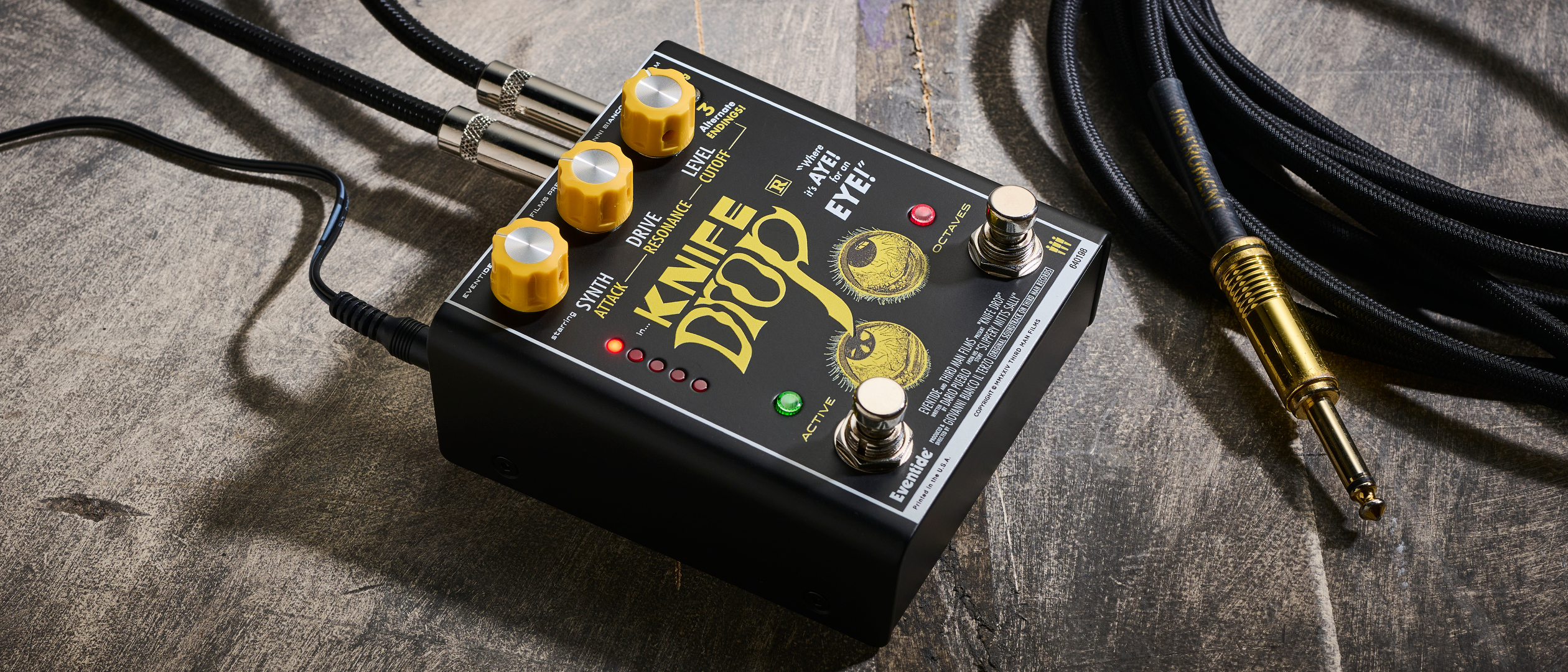Guitar World Verdict
One for the tone weirdos, the Eventide x Third Man Hardware Knife Drop is a pedal for the experimental. Packing a huge variety of mono synth tones alongside octave and overdrive effects, there’s a wide array of sounds available from this inventive stompbox.
Pros
- +
Capable of a huge range of sounds.
- +
Powerful controls allow for sonic experimentation.
- +
Includes high and low octave effects.
- +
Ability to save five presets.
Cons
- -
Presets only accessible via MIDI or footswitch.
- -
Accessing second knob parameters is a little awkward.
You can trust Guitar World
What is it?
Coming from Jack White’s Third Man Hardware and effects legends Eventide, the Eventide x Third Man Hardware Knife Drop is a monophonic analog synth pedal. It adds an overdrive circuit and octave up-and-down functionality into the mix, promising a bold reshaping of your more usual sonic textures.
There are quite a few synth pedals available for guitarists nowadays, with popular choices like the Boss SY series, Source Audio C4, and the Electro-Harmonix Synth 9 and Mono Synth pedals giving you the ability to turn your guitar into that most digital of instruments. As a previous owner of a Boss SY-1, I can personally attest to the fact that the tracking for these pedals has dramatically improved in the last ten years, making it more than viable to completely transform the sound of your guitar.
Knife Drop isn’t a super-clean synthesizer pedal like the SY-1 though. Its aims are decidedly more nefarious, designed for the more experimental guitar players who want to really push the boundaries of their instrument. If the Italian horror-movie style design and packaging didn’t give it away, it’s here to get nasty.
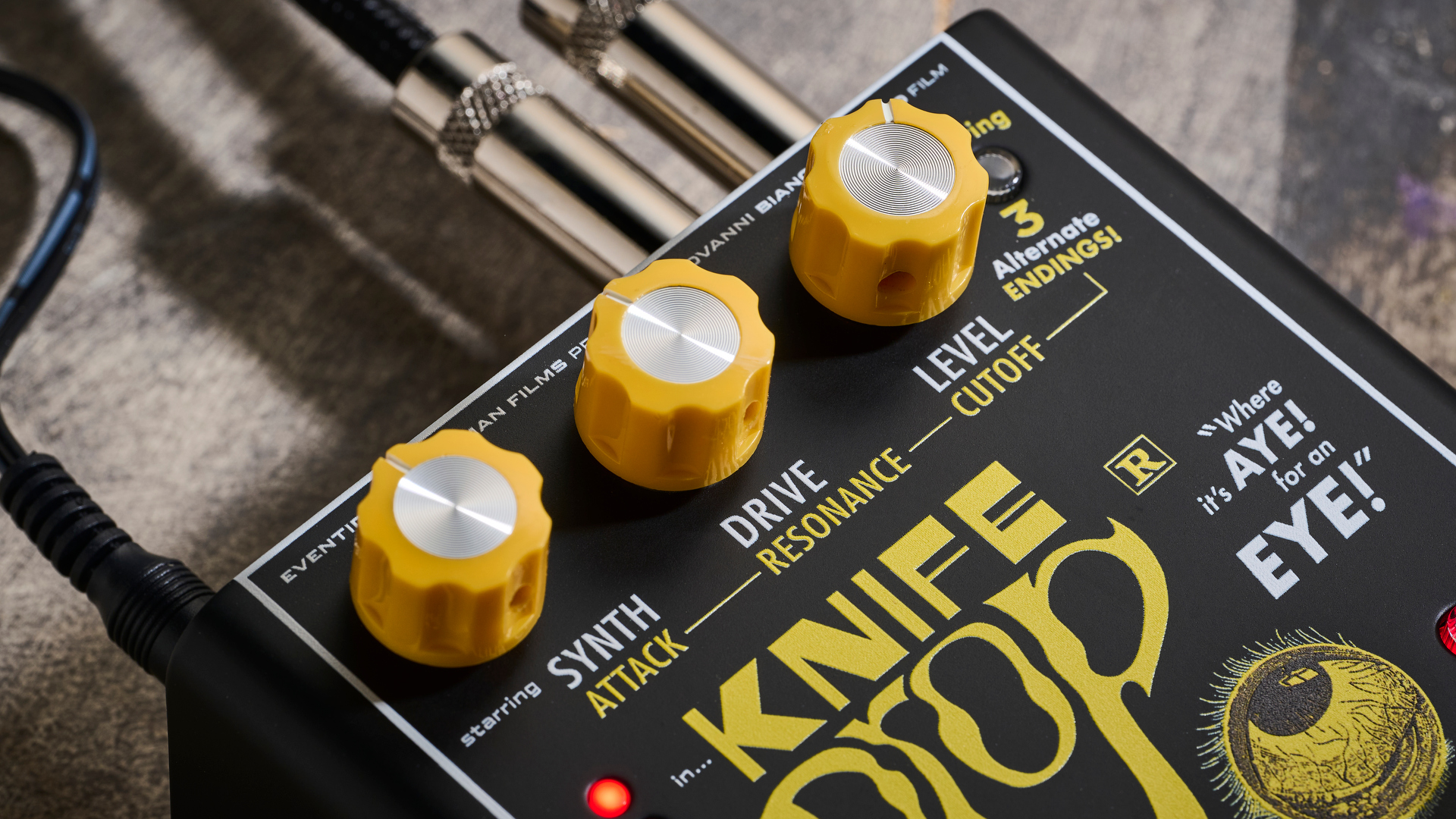
Three knobs control two parameters each and running left to right they give you a synth control which gives an increasing amount of synth tone versus your dry guitar signal. The drive control adds in the overdrive circuit, which can be moved to pre or post-filter. Then you’ve got your level control which controls the output volume of the pedal.
By pressing and holding the small LED/button to the right of the level knob you can access secondary controls, starting with the attack knob which dictates the attack speed between 0 and 1000ms. The resonance knob increases the resonance of a low pass filter, while the cutoff knob selects the starting frequency for the filter envelope sweep.
At the bottom of the pedal, you have two soft-press footswitches, one of which turns the pedal on and off titled active, and the other which engages the octave effect. The LEDs above each double as buttons for extra control, with the active LED changing depending on whether the overdrive is pre or post-filter, and the octave LED engaging either a high or low octave.
In terms of connectivity, you’ve got a single 1/4-inch input which can be used with a TRS cable for stereo input, two 1/4-inch outputs, a 1/4-inch TRS input for an expression pedal or additional switch, and a mini USB for accessing presets in the H90 Control software. There are also two switches for engaging mono or stereo inputs, as well as a guitar or line level switch for using it with different instruments.
All the latest guitar news, interviews, lessons, reviews, deals and more, direct to your inbox!
Specs
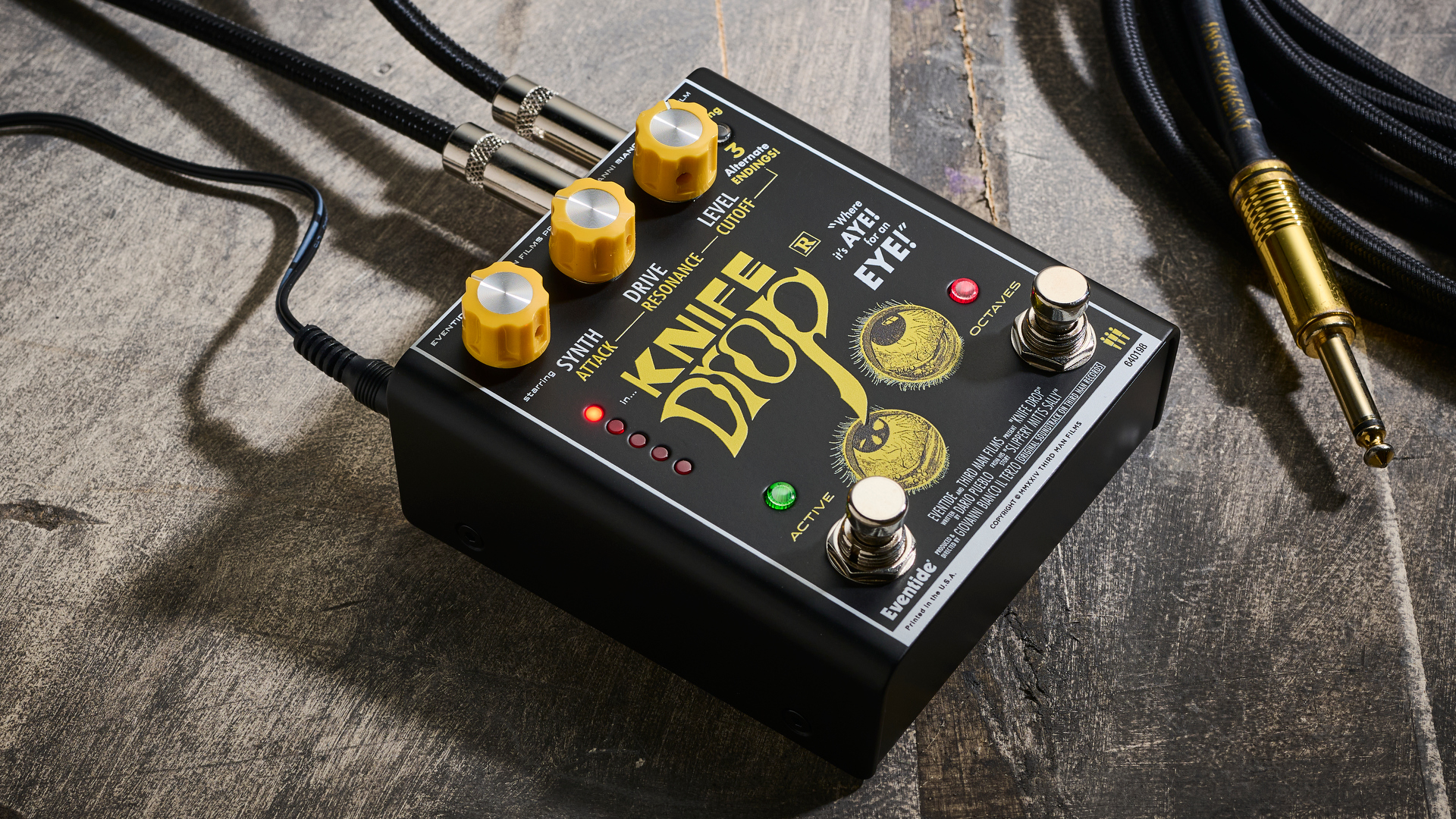
- Launch price: $299/£299/€352
- Type: Synthesizer pedal with octave and overdrive
- Controls: Synth, drive, level, attack, resonance, cutoff
- Features: Any other features we should know about?
- Connectivity: 1x 1/4-inch input, 2x 1/4-inch outputs, 1x 1/4-inch expression, mini USB, power connection
- Bypass: Buffer, relay, DSP + FX, kill dry
- Power: 9V DC, 300mA
- Dimensions: 102 mm x 108 mm x 43 mm
- Weight: 0.48 kg / 1.06 lb
- Contact: Third Man Hardware, Eventide
Build quality
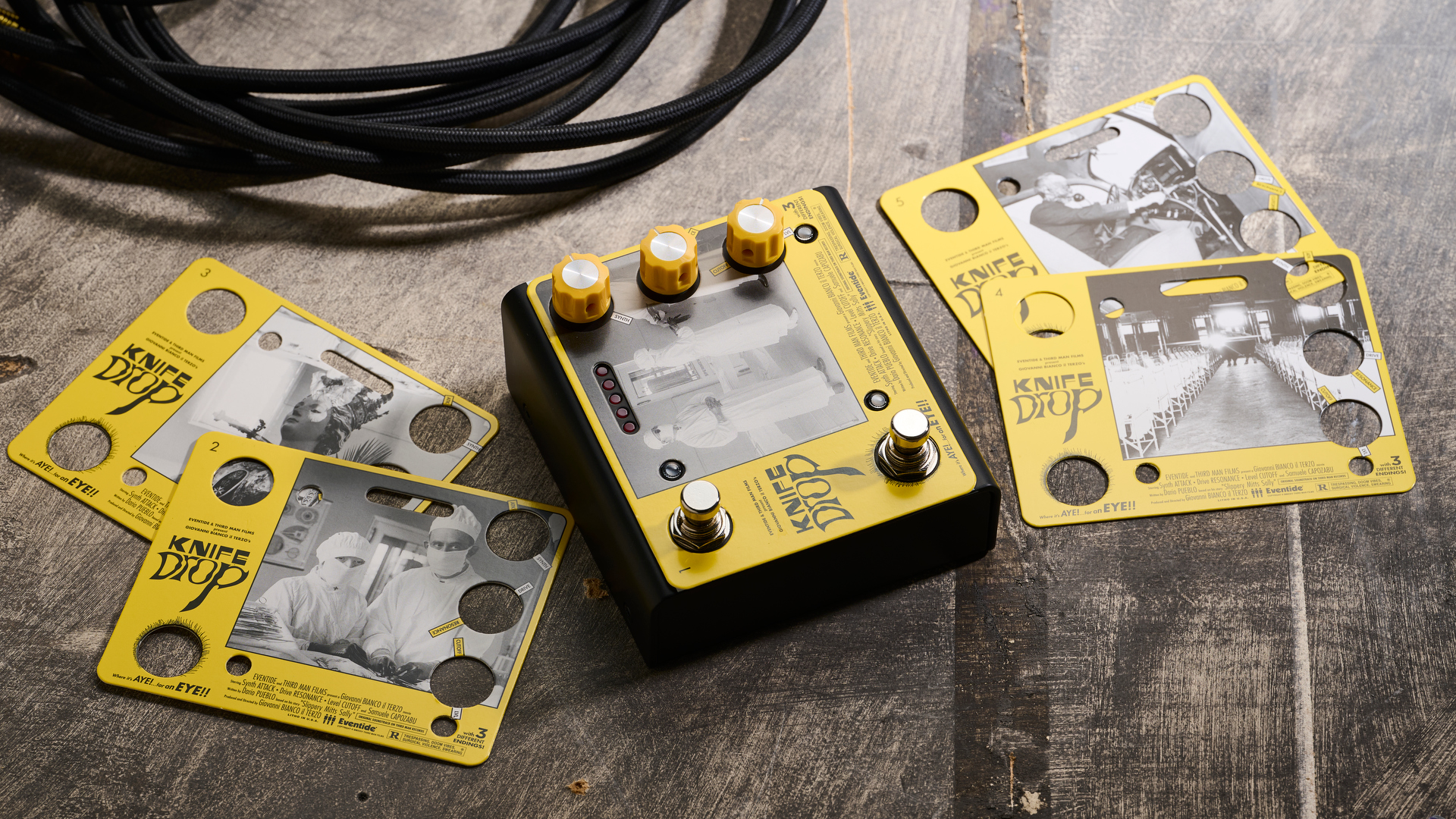
Build quality rating: ★★★★★
The first thing I noticed about the Knife Drop was the seriously cool design ethos. From the packaging to the pedal design itself you can tell that a lot of thought has gone into the way it looks. It’s all 70s B-movie chic with a rated R logo, hand-drawn eyeballs, and talks about ‘scaring away neighborhood cats’, the aesthetic choices are fantastically well thought out.
Inside you get a bunch of cards that fit over the pedal, each depicting artsy scenes of surgeons performing their trade and various horror-movie looking shots. These aren’t just for the vibe though, they’re preset overlay cards that unlock various suggested settings for the pedal.
The pedal itself also features that old movie-post style design with a black and yellow fascia that caught a fair few eyes when I took it to a recording session. It’s ruggedly built as you’d expect from something Eventide has created, with the knobs feeling nice and solid, neither too stiff nor too loose. I’d be very comfortable gigging it and in terms of size it’s not quite Boss-levels of compactness but I wouldn’t call it huge either.
Usability
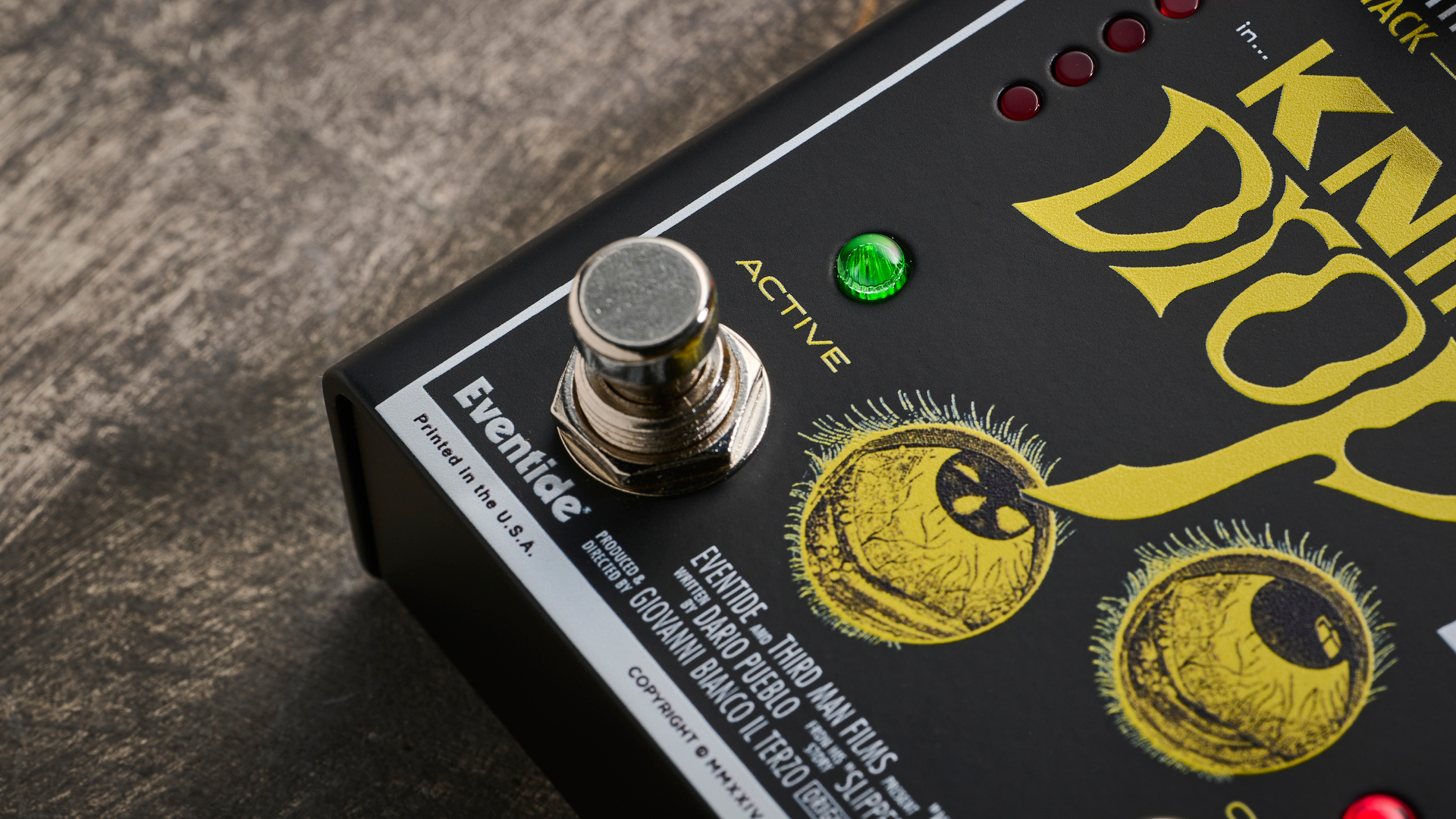
Usability rating: ★★★★☆
I first used the pedal in a rehearsal with my band, and I was able to work out the workflow and controls pretty quickly. I always like to try and use a pedal before delving into the manual just to see how intuitive it is to manipulate. The controls are all pretty self-explanatory if you’ve ever used a guitar pedal before, although it took me a while to work out how to engage the secondary functions. You need to hold the LED/button marked ‘3 alternate endings’ while changing the controls which was a little bit awkward.
With this sort of pedal being experimental in nature, you need to tweak it to find the right settings so holding a button, turning a knob, and continuing to play my guitar was a bit clumsy.
In the end, I used my guitarist dexterity to get around needing an extra hand, holding the alternate button in with my pinky whilst turning the knobs with the same hand and playing legato on the fretboard of my Telecaster. It’s as awkward as it sounds, and I’d have much preferred it if this was a latching switch rather than a momentary one.
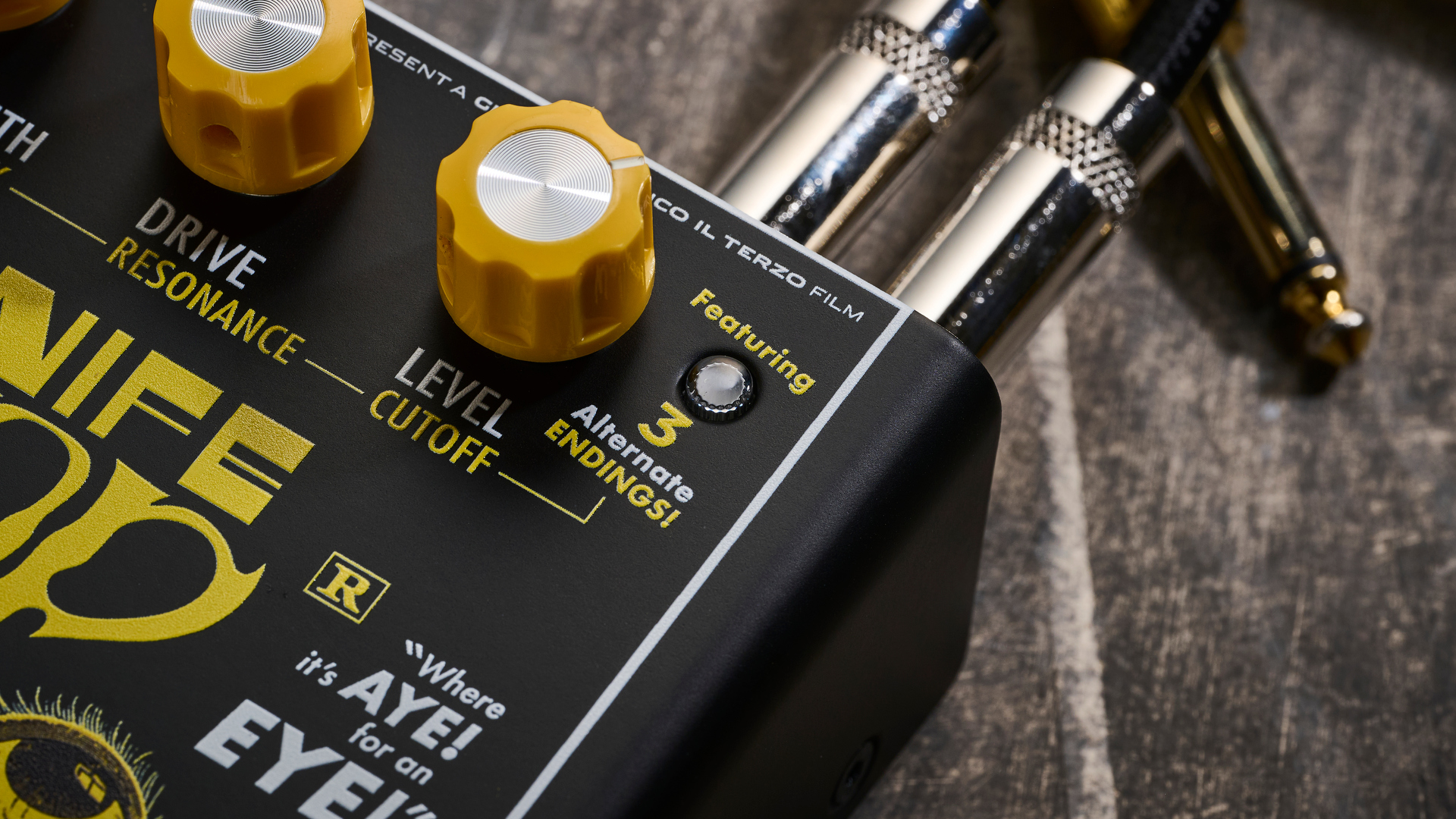
Once I’d worked around that particular issue I found it easy to start dialing in some gnarly synth tones, and with just the three knobs it’s a relatively simple pedal to use. Once I’d settled on a sound I liked I could not work out how to save it, so I had to admit defeat and break out the manual, which is very clearly laid out and explains nearly everything you need to know.
To save a preset you have to press and hold both footswitches, with the corresponding LED flashing twice to tell you it’s been saved. Job done, and I wanted to move on to making and saving another sound, but nowhere in the manual does it say how you do this. Instead I had to Google it, with a Reddit post informing me that preset switching is only available via MIDI or by plugging a footswitch into it.
One of the key factors behind me selling my Boss SY-1 was that there was no way to save a preset, and with so many sounds in it, if you wanted to use more than one tone you had to memorize your settings.
The Knife Drop boasts preset saving, but you can only access it via MIDI or an additional footswitch. It’s not a complete howler, but it feels like a missed opportunity to do something better than some of the competition. I managed to get it to switch settings for me by connecting my Boss FS-6 and entering the system settings, but I really wish it could just do this natively with a button press.
Sounds
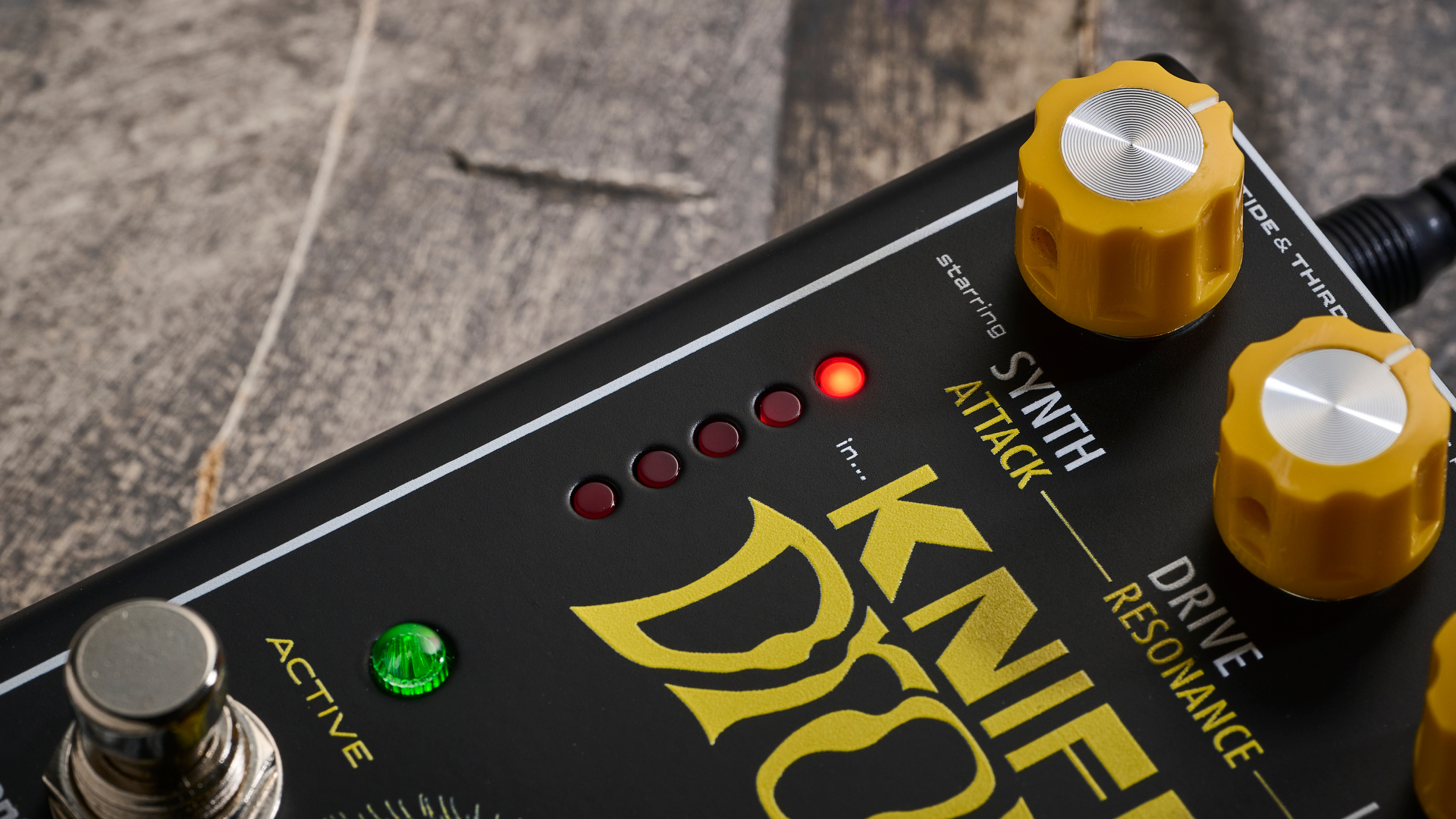
Sounds rating: ★★★★½
Think trippy tails at the end of the note that catch you by surprise
As I mentioned before, my first test was taking it to rehearsal to see what sounds I could evoke. Straight away, the Knife Drop let me know that it was not a nice and clean, well-behaved synth pedal. It can be very unpredictable with how it reacts to your pick attack, resulting in some amazing sounds if you like your tones slightly erratic and experimental. We were working on a noisy post-punk track, and here it was able to become the center-point of the entire song as I played a slowly rising drone sound.
The heavily saturated synth tone alongside a sweep echo and big reverb from my HX Stomp made for some seriously inspiring sounds that evoked the noisier tone of Idles’ Lee Kiernan. Think trippy tails at the end of the note that catch you by surprise, low tones that duck out unexpectedly, and wails of feedback that will definitely have the band next door wondering what the hell is going on.
It can get properly heavy too. With the low octave engaged, you’re entering drone territory with some of the settings, and the pedal will ring out for days on end if you let it. It seems to have some kind of built-in noise gate that cuts off the sound as soon as you mute the strings which is really handy on the gnarlier settings, although I did find sometimes it ate into the tails of my notes.
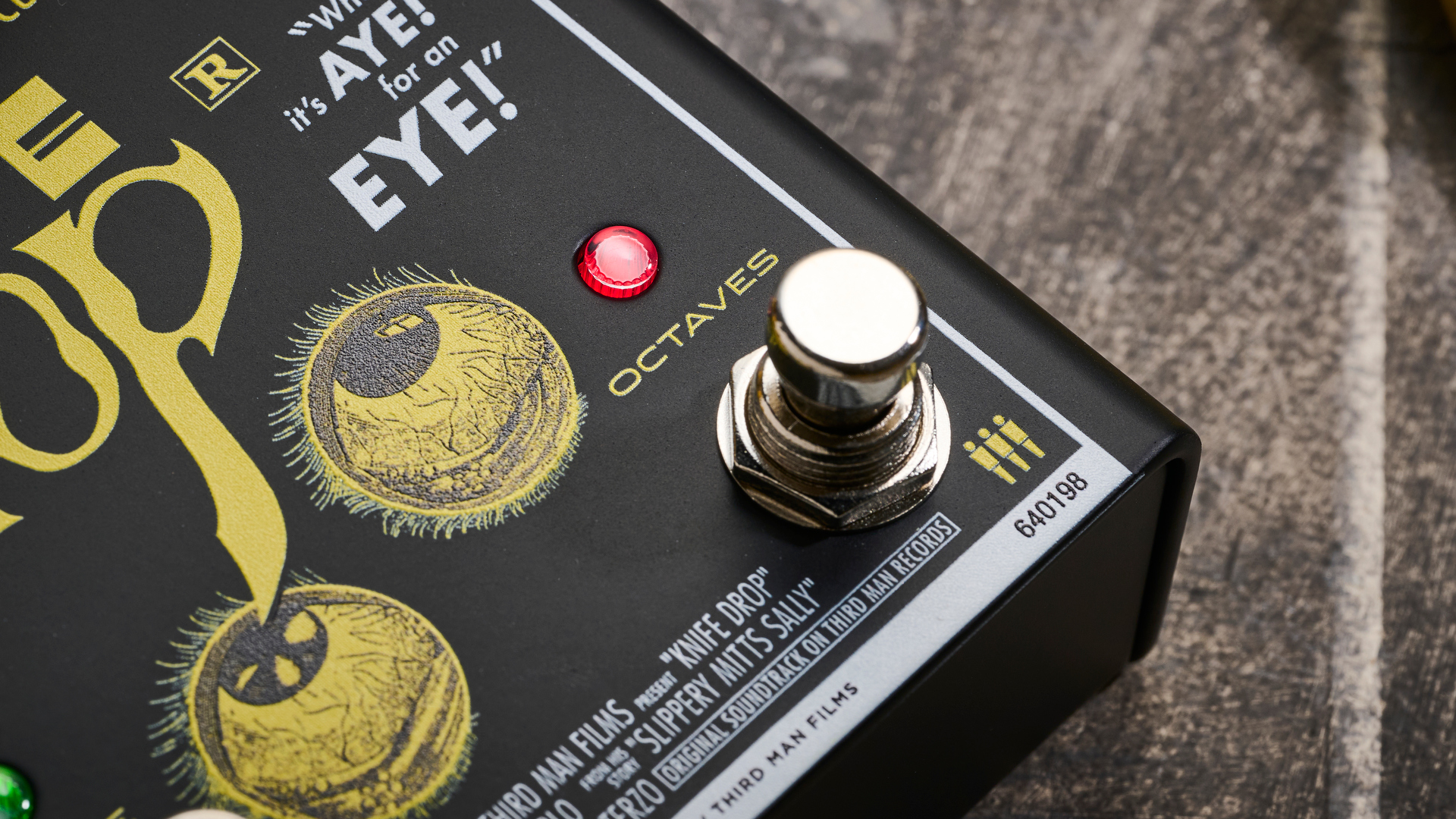
Dial the drive up high and engage the high octave and you’ll get a fuzz pedal-type sound that’s close to White Stripes-era Jack White, albeit a little less sensible. Changing the overdrive from pre to post-filter also has a massive effect on the sound. With it pre-filter you get a sound that’s a lot more guitar-esque, with the synth tones taking a back seat. Switch to post-filter and you get the opposite sound, with a more synthetic tonality to the pedal overall.
Change up the attack control and you get a less immediate sound that takes a small amount of time to properly kick in the high end. If you want that slow blooming effect Knife Drop can also do that, with an adjustment of the cutoff knob giving you the ability to swell your synth tones in. The resonance knob controls the amount of low-end resonance so as you turn it up you’ll find the sound gets less muddy and more defined.
I put together a demo track based on the presets that come in the box to give you an idea of this pedal’s sounds, you can find them below. Each track features a single-note section with just the synth, a chord section with just the synth, single notes with the low octave engaged, chords with the overdrive in pre-filter mode, and finally single notes with the high octave engaged.
Verdict

There are a lot of sounds in this pedal, and not many of them are what I’d call polite. It can do a decent imitation of an octave fuzz, but just using it for that would be a huge waste in my opinion. Knife Drop is for players who want to get lairy, experiment with the interactions between stompboxes, and create auditory carnage.
It does have some flaws though, mainly in its usability. Having to hold the button for alternate controls makes it a lot more difficult than it should be to experiment, which for a pedal firmly in the experimental territory feels like a miss. Similarly, the fact you can’t access the presets without an additional footswitch is a little disappointing to me, but granted it’s relatively easily and cheaply remedied.
Guitar World verdict: Overall I absolutely loved experimenting with the Eventide x Third Man Hardware Knife Drop. It’s a pedal that won’t suit every player, but if you’re the sort who’s interested in looking beyond yet another Tube Screamer or Klon clone, there are some very satisfying sounds here that will keep you knob tweaking for hours on end.
Test | Results | Score |
|---|---|---|
Build quality | Rock solid, fantastic aesthetic | ★★★★★ |
Usability | Missing some key features | ★★★★☆ |
Sounds | A superb choice for experimental players | ★★★★½ |
Overall | A great pedal for those seeking less usual tones | ★★★★½ |
Also try
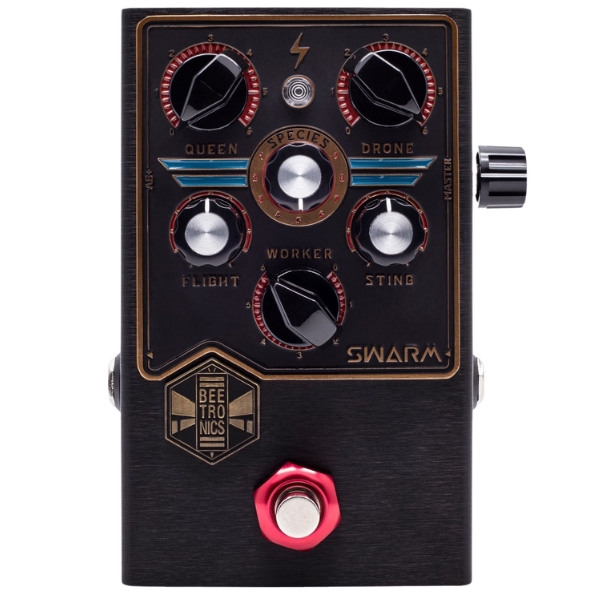
If you’re after some gnarlier sounds, the Beetronics Swarm is a similar pedal to the Knife Drop in that it mixes synth modulation with fuzz and pitch shifting. You can eke a decent octave fuzz out of it, and it can absolutely give you synth tones if you want them. It’s an unpredictable and noisy pedal that’s perfect for more experimental sound creation.
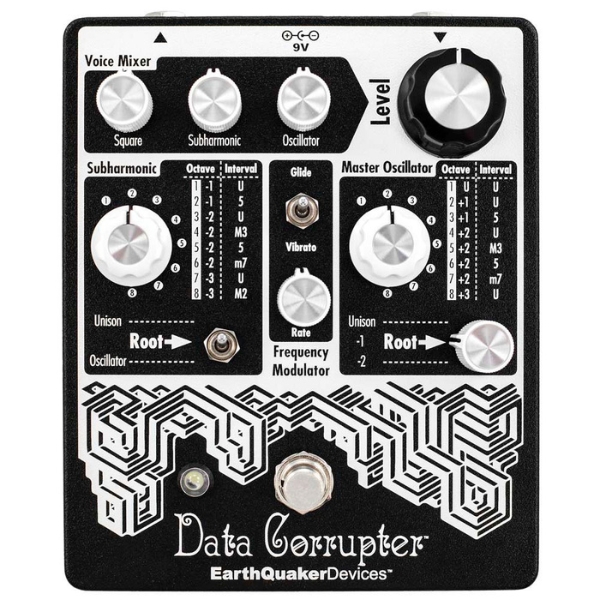
If you want something really out there, I can heartily recommend the Earthquaker Devices Data Corrupter for some properly unpredictable sounds. It’s one of those pedals that borders on unusable, but every now and then you’ll find some magical settings that completely blow you away. Again it has a drive section, can do synth sounds, and does pitch shifting, all of which are absolutely turned up to 11.
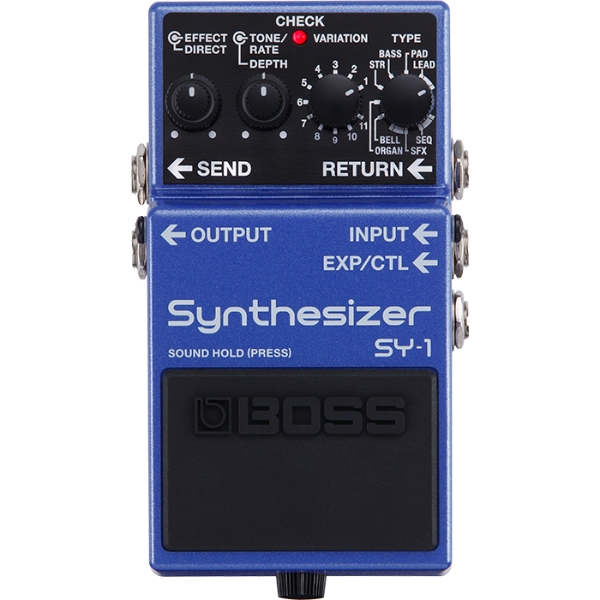
The Boss SY-1 is a decidedly more well-behaved synth pedal than the Knife Drop and it features a huge array of synth tones. It can do mono synth, lead synth, strings, organs, arpeggiated, and loads more. With quite literally hundreds of sounds in it, you’re getting a lot for your money and it’s all packed into the typical compact Boss enclosure. There’s no preset savings however, and the sounds are all very clean, so if you want nastier sounds à la the Knife Drop or the other two pedals I’ve recommended here, you’ll need to add some more stompboxes to your chain.
Hands-on videos
Reverb
Six String Alliance
Eventide

Matt is a Junior Deals Writer here at Guitar World. He regularly tests and reviews music gear with a focus on guitars, amps, pedals, modelers, and pretty much anything else guitar-related. Matt worked in music retail for 5 years at Dawsons Music and Northwest Guitars and has written for various music sites including MusicRadar, Guitar Player, Guitar.com, Ultimate Guitar, and Thomann’s t.blog. A regularly gigging guitarist with over 20 years of experience playing live and writing and recording in bands, he's performed everything from jazz to djent, gigging all over the country in more dingy venues than you can shake a drop-tuned guitar at.
You must confirm your public display name before commenting
Please logout and then login again, you will then be prompted to enter your display name.
